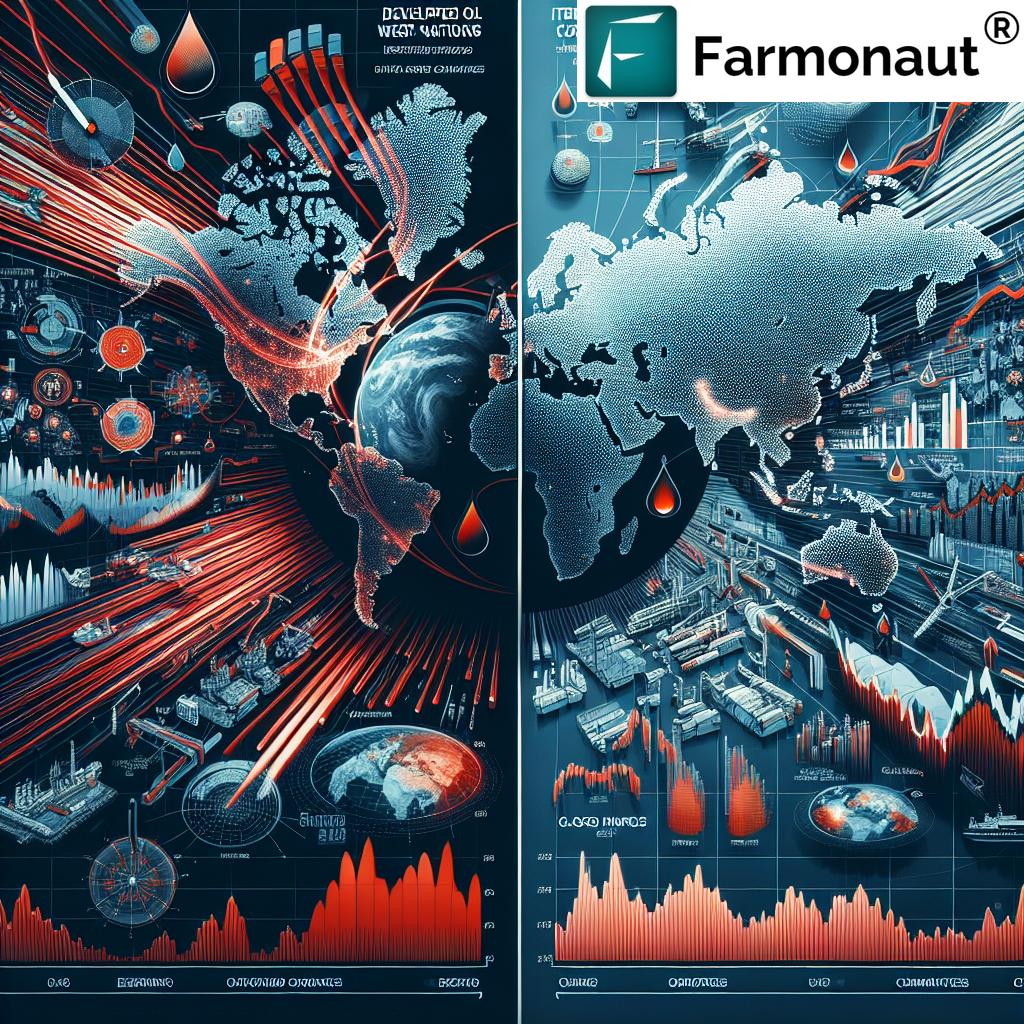Unleashing the Bull: Corn Futures Surge on Record-Breaking U.S. Export Sales Amid Harvest Challenges

In a surprising turn of events, the U.S. agricultural commodity market is witnessing a remarkable surge in corn futures, defying the typical harvest-time pressure. This unexpected bullish trend is primarily driven by record-breaking corn export sales to Mexico, sending ripples through the entire grain market landscape. As farmers and traders navigate these volatile waters, it’s crucial to understand the intricate dynamics at play and their potential implications for the broader agricultural sector.
Record-Breaking Corn Export Sales Fuel Market Optimism
The U.S. Department of Agriculture (USDA) recently reported an astounding 1.6 million metric tons of corn sold to Mexico, marking one of the largest single-day sales in recent history. This unprecedented volume of U.S. export sales has injected a dose of optimism into the market, causing corn futures to surge by 0.3% to $4.06 a bushel on the Chicago Board of Trade (CBOT).
The magnitude of this sale cannot be overstated. It represents a significant portion of Mexico’s annual corn imports and underscores the strong demand for U.S. corn in international markets. This surge in exports comes at a critical time when domestic corn prices have been under pressure due to the ongoing harvest season.
Corn Harvest Impact on Futures: A Delicate Balance
Traditionally, the corn harvest season in the United States brings downward pressure on prices as supply floods the market. However, this year’s corn harvest impact on futures is being offset by the robust export demand. The USDA reports that the corn harvest is progressing rapidly, with 47% of the crop already collected.
This rapid harvest progress would typically lead to bearish sentiment in the futures market. However, the record export sales have created a unique situation where corn futures surge amid harvest activities. This delicate balance between increasing supply and strong export demand is keeping traders on their toes and contributing to market volatility.

CBOT Grain Market Analysis: A Mixed Bag of Trends
The CBOT commodities are showing mixed trends as various factors influence different grain markets. While corn is the star performer, other grains are also experiencing notable movements:
- Wheat prices have climbed 0.4%, driven by concerns over crop conditions in major exporting countries like Argentina and Australia.
- The soybean market has seen a modest 0.3% increase, supported by favorable weather conditions in Brazil, a key competitor in soybean production.
These diverse trends highlight the complexity of the grain markets and the need for farmers and investors to stay informed about global agricultural developments. Tools like Farmonaut’s precision agriculture solutions can provide valuable insights for data-driven decision-making in crop management and market analysis.
U.S. Agricultural Commodity Prices: Navigating Challenges and Opportunities
The recent surge in corn futures is a bright spot in an otherwise challenging landscape for U.S. agricultural commodity prices. Several factors are influencing the broader commodity market:
- A strong U.S. dollar is creating headwinds for agricultural exports, making American products more expensive for international buyers.
- South American weather conditions are favorable for crop production, potentially increasing competition in global markets.
- Commodity prices for soybeans are near multi-year lows, putting pressure on farmers’ profitability.
Despite these challenges, the record corn export sales demonstrate that opportunities still exist in the market. Farmers and traders who stay agile and well-informed can capitalize on these market movements.
Wheat Market Concerns: Argentina and Australia in Focus
While corn is grabbing headlines, the wheat market is facing its own set of challenges. Wheat market concerns in Argentina and Australia are driving up prices both domestically and in export markets. Dry weather conditions in these key wheat-producing countries have raised questions about potential yield reductions and quality issues.
In Argentina, prolonged drought has affected wheat plantings and early crop development. Australia, on the other hand, is grappling with the possibility of a drier-than-average spring, which could impact grain filling and overall production. These concerns have led to increased buying interest in U.S. wheat, contributing to the 0.4% rise in wheat futures.
Soybean Trends in South America: Implications for Global Markets
The soybean trends in South America are closely watched by market participants worldwide. Brazil, the world’s largest soybean exporter, is experiencing favorable weather conditions that bode well for the upcoming planting season. This positive outlook has put some pressure on U.S. soybean prices, as traders anticipate increased competition in the global market.
However, the modest 0.3% increase in soybean futures suggests that the market is still finding support from other factors, such as steady domestic demand and the potential for increased Chinese purchases. As the South American planting season progresses, market participants will be closely monitoring weather patterns and crop progress reports for any signs of change in production estimates.
The Role of Technology in Agricultural Decision-Making
In today’s rapidly changing agricultural landscape, staying informed and making data-driven decisions is more critical than ever. Farmers, traders, and investors can leverage advanced technologies to gain a competitive edge. Farmonaut’s suite of precision agriculture tools offers valuable insights for crop management and market analysis.
By utilizing satellite imagery, weather data, and advanced analytics, agricultural professionals can:
- Monitor crop health and predict yields with greater accuracy
- Optimize resource allocation and reduce input costs
- Identify potential issues before they become major problems
- Make informed decisions about planting, harvesting, and marketing strategies
Access to real-time data and analytics can help farmers and traders navigate the complexities of the grain markets and capitalize on opportunities as they arise.
Looking Ahead: Key Factors to Watch
As the agricultural commodity markets continue to evolve, several key factors will shape the landscape in the coming months:
- Progress of the U.S. corn and soybean harvests
- Weather patterns in South America during the planting and growing seasons
- Developments in the U.S.-China trade relationship and potential impacts on agricultural exports
- Global economic conditions and their effect on commodity demand
- Currency fluctuations and their influence on export competitiveness
By staying informed about these factors and utilizing advanced agricultural technologies, market participants can position themselves to make the most of opportunities and mitigate risks in this dynamic environment.
Conclusion: Navigating the Bull Market in Corn Futures
The surge in corn futures amid record-breaking export sales highlights the complex and often unpredictable nature of agricultural commodity markets. While challenges persist in the form of harvest pressures and global competition, opportunities abound for those who can navigate these waters skillfully.
As the market continues to evolve, staying informed and leveraging advanced technologies will be crucial for success. Whether you’re a farmer looking to optimize your crop management strategies or an investor seeking to capitalize on market trends, tools like Farmonaut’s precision agriculture solutions can provide the insights needed to make informed decisions.
The agricultural landscape is changing rapidly, and those who embrace data-driven approaches and stay ahead of market trends will be best positioned to thrive in this dynamic environment.
For developers interested in integrating agricultural data into their own applications, check out the Farmonaut API and the comprehensive API Developer Docs.
















